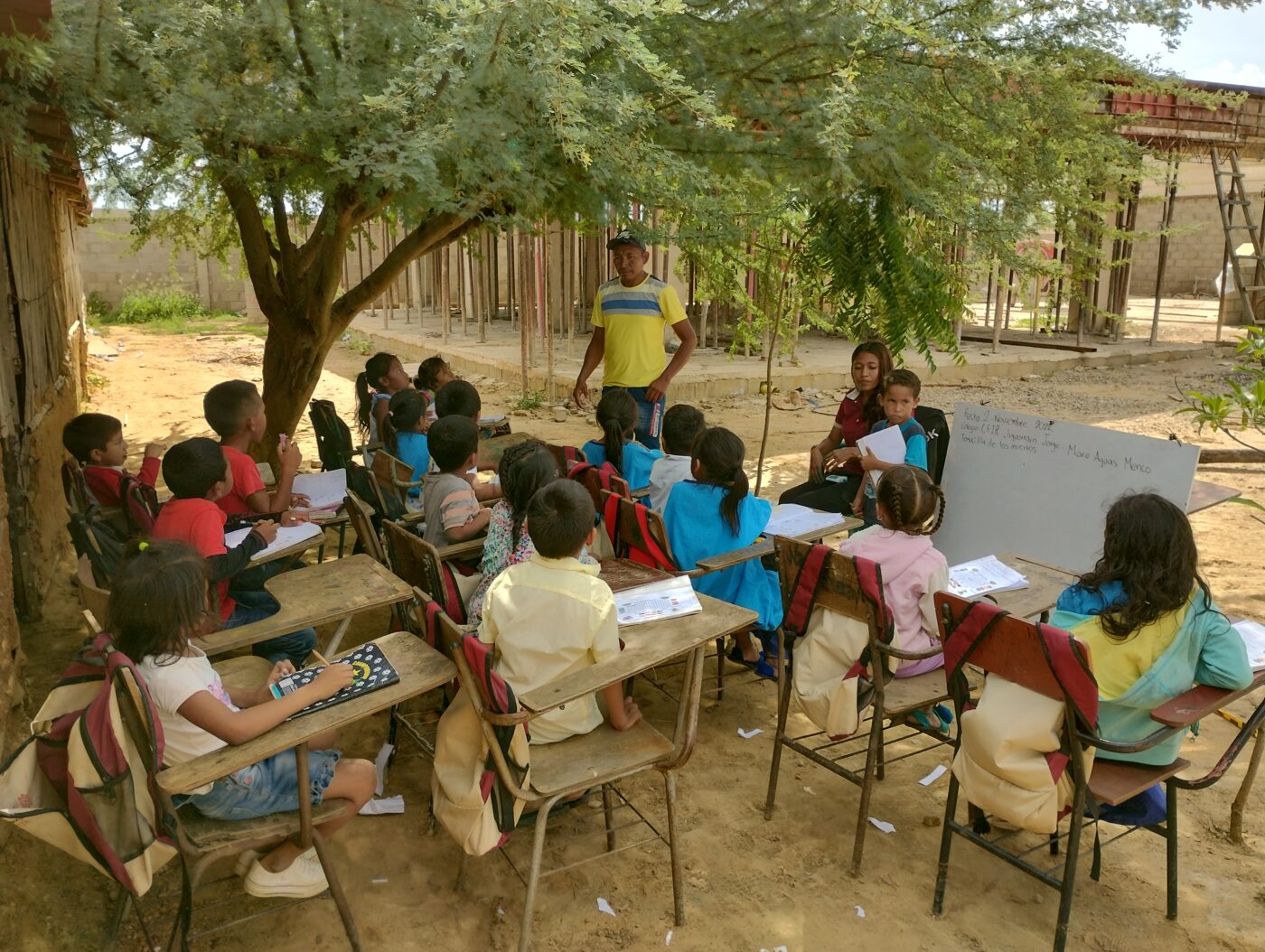How do boys and girls learn at this experimental farm in Uribia, La Guajira?
Pedro Córdoba is a teacher of Spanish Language, Culture and Language at the Institución Integral Rural Juyasirain Jorge Mario Aguas Menco in the municipality of Uribia, La Guanira. In a mission to La Guajira within the framework of the emergency education project that we are developing together with Unicef Colombia with the support of PRM (Bureau of Population, Refugees, and Migration of the United States Department of State), we had the opportunity to talk with him about his institution and about the emergencies that the municipality is facing. Listening to Pedro and other people in the community is relevant to strengthen the strategy of putting education at the center in emergency contexts.
Hand in hand with the initiatives, games, activities and reflections fostered by Click+Clack and Unicef, it is a priority to approach the community to find strengths, learn the methodologies of teachers, recognize their needs and build new tools collectively as a result.
Click+Clack: What is the heart of the Institución Integral Rural Juyasirain Jorge Mario Aguas Menco?
Pedro Córdoba: “The core of Juyasirain is the experimental farm. On the experimental farm we have medicinal plants, cassava, wheat and corn. We have goats, 12 big goats and 4 small ones. On the pigpen we have three large pigs.”
C+C: How do cross-cutting strategies work in on-farm learning processes?
PC: “From the area of Spanish Language, students are asked to come to the farm and from there an exercise in description is carried out. From reading comprehension we also address natural sciences, social sciences, artistic education, arithmetic, and worldview. In social sciences we also address history. How does everything come together? The main axis is the area that I am teaching. Spanish Language. I take the other areas and, from a common point, like traditional medicine, we observe and explore plants. From there, since teachers of artistic education are working the types of lines, we look at how students can recognize vertical lines, horizontal, zig zag, curve, and diagonal on the farm. In statistics, random and possibility experiments are conducted: what is certain, possible and impossible. Then we move on to the area of cosmovision and approach the importance of traditional medicine. In natural sciences students look at the kinds of plants that exist on a general level, but they also recognize which plants are local. Within the framework of worldview, the outsü is taken as the main figure (the outsü is the traditional wayúu doctor). This proposal was implemented throughout this period, which we are already finishing, so that students did not feel overwhelmed. It’s a way to help them weave all areas together in a striking way.”
**The woman curator –outsü– as a spiritual authority in the community of Wararalain and how these practices and knowledges are still active in the 21st century, taking into account the political, environmental, cultural and health context of which the historical reality that the Wayúu people have lived in Colombia is part.
C+C What are the emergencies that interrupt the educational process of the students in Uribia?
PC: “One of the emergencies that has affected us the most is the issue of the floodings because the institution does not have a point of drainage, so water is repressed, especially in the primary school area. In the entrance, children walk and wet their shoes. The halls and the roofs have deteriorated and broken by the winds. There are also leaks. That’s a distraction when we’re in class. The floodings have damaged the walls of the rooms, which are made of clay; there are rooms that flood and we have to look for sand to fill the room.
Another emergency is the climate issue, heat, which is very strong between 11:00 am and 1:00 pm. Since we have some kiosks, we have gone outside in some moments to give the classes there. The issue of transport is another problem. As it is not constant, sometimes children must stay on the road. This is dangerous and that does not allow them to reach the classroom. That’s why parents decide not to send them, to avoid a possible accident. And there is another problem that is that of teenage pregnancies. Some girls have become pregnant. The institution feels sorry for them and they send them some guides so that they learn during their confinement. ”
C+C What other threat does education face and how can that threat be addressed?
PC: “There are children who are mechanics, who work in bakeries. Because of work, they often do not study. But our emphasis is on entrepreneurship and this allows us to turn that threat of desertion into a strength: we are telling them that if they want to work and grow in their jobs, then we support them in continuing their studies, because they need them to become professional. “
